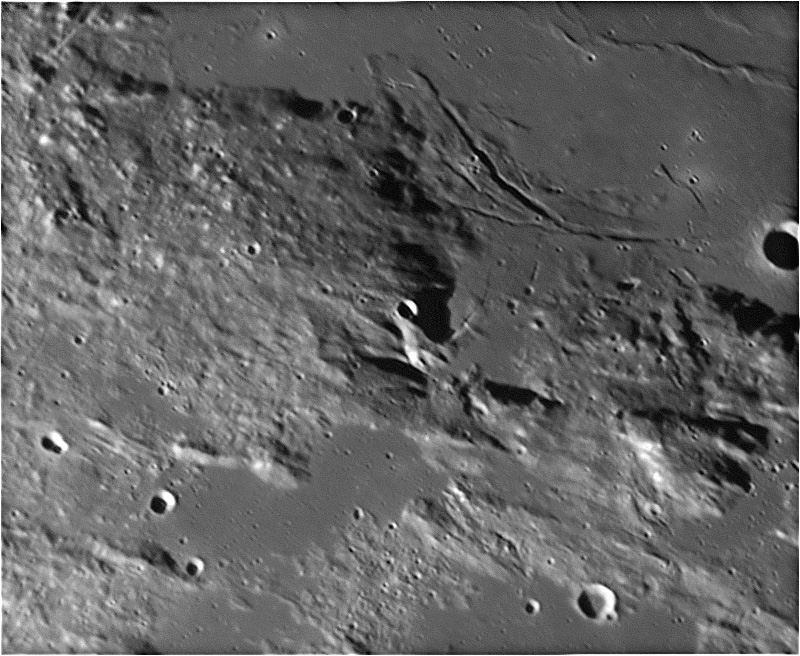
image by Wes Higgins
The southwest edge of Mare Serenitatis is ringed by low topography given the name of the Haemus Mountains. These are part of the rim of the Serenitatis impact basin, but what we actually see is a landscape totally veneered by hilly and slightly lineated material – ejecta from the formation of the Imbrium impact basin. Areas that are low – probably remnants of buried craters - contain ponds of mare lava that have totally unnecessary names such as lakes of hate, suffering and joy. Scientifically much more fascinating are the arcing Sulpicius Gallus Rilles. They cut higher, rougher and older lavas exposed now only at the edges of Mare Serenitatis – the Menelaus, Plinius and Littrow rilles all occur on the same lavas. Apollo 15 astronaut Al Worden noticed subtle dark colors along the rilles, and Apollo 17 astronaut Jack Schmitt saw orange, red and black ashy material in the area. Without being in orbit you can see the darkness that coats the Haemus Mountains near the rilles. This is one of the largest pyroclastic deposits on the Moon. Finally, notice the narrow rilles and crater chains at right angles to the main rilles – these probably trace conduits (dikes) that fed lava and ash to the surface. This would have been a dramatic place to be 3.6 or so billion years ago!
Technical Details:
Aug 25, 2005. 18″ Starmaster Reflector, Infinity 2-1M camera, MAP processing, 20fps, stack of 500 frames.
Related Links:
Rükl chart 23
Wes’ lunar photos
COMMENTS?
Click on this icon File:PostIcon.jpg at the upper right to post a comment.



